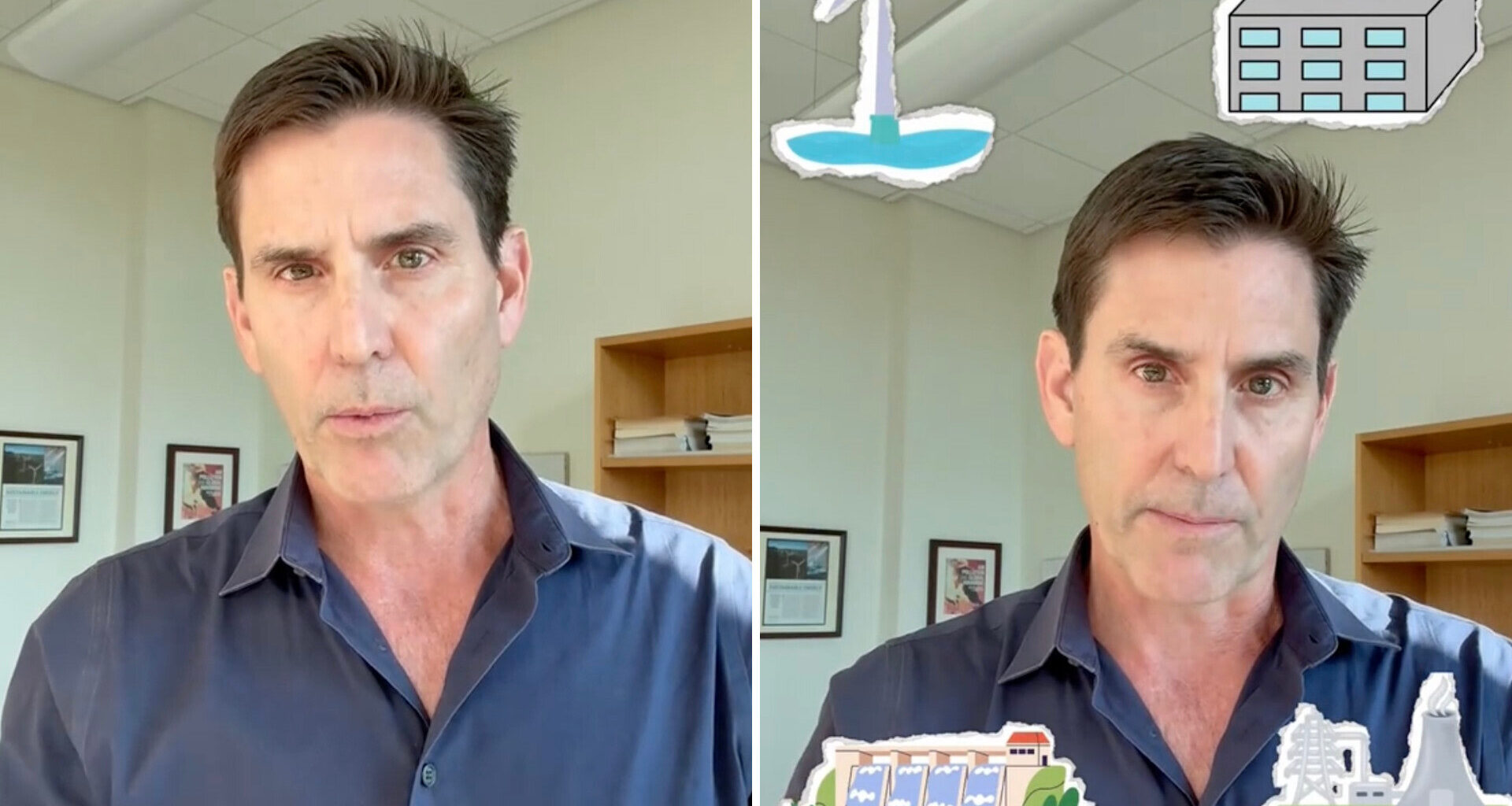Using more renewable power sources is essential for our planet’s future. But a common anti-clean energy talking point is that converting to wind turbines and solar panels on a large scale would require a lot of extra land space.
Mark Jacobson (@mzj2273), a professor of civil and environmental engineering at Stanford University, posted a TikTok “busting a myth about land used by fossil fuels versus renewables.”
@mzj2273 Busting a myth about land used by fossil fuels versus renewables #renewables #cleanenergy #sustainability #landuse #fossilfuels #ethanol #energy #energytransition #wind #solar ♬ original sound – MZJ
He explained that the fossil fuel industry, plus the ethanol industry, together occupy about 2.4% of all U.S. land. That includes millions of miles of pipelines, active and inactive oil and gas wells, corn farmland to supply ethanol for transportation, and more.
“In comparison, if we transition the entire U.S. for all purposes … to clean renewable energy … we would use only about 0.85% of U.S. land,” he said.
Jacobson said that would mean all electricity usage, transportation, the construction industry, and non-electric sectors could be powered by clean wind, water, and solar power.
“We do not need any new land for offshore wind, because it’s all in the water. We do not need new land for rooftop photovoltaics,” he said. “… So the only new land we need is for utility-scale solar and for onshore wind.”
Even this new land would mostly account for open space between wind turbines that Jacobson explained can have multi-purpose uses, like rangeland, farmland, or space for solar panels.
“To summarize, we will use much less land if we convert our entire energy infrastructure in the United States to just wind, water, and solar, after electrifying all energy, than we currently use for fossil fuels and for bioenergy fuels,” he concluded.
As clean energy tech advances, land use will become even more efficient. Offshore wind farms are already a reality and promise huge potential. And using land for both solar energy and agriculture is known as agrivoltaics.
Installing solar panels on existing farmland can provide a secondary stable income for small agricultural producers while mitigating some risk from slow farming seasons. Bringing these two industries together doubles the output from the same land, and it can help curb pollution and conserve resources.
TCD Picks » Upway Spotlight
💡Upway makes it easy to find discounts of up to 60% on premium e-bike brands
💰Get TCD’s free newsletters for easy tips to save more, waste less, and make smarter choices — and earn up to $5,000 toward clean upgrades in TCD’s exclusive Rewards Club.
